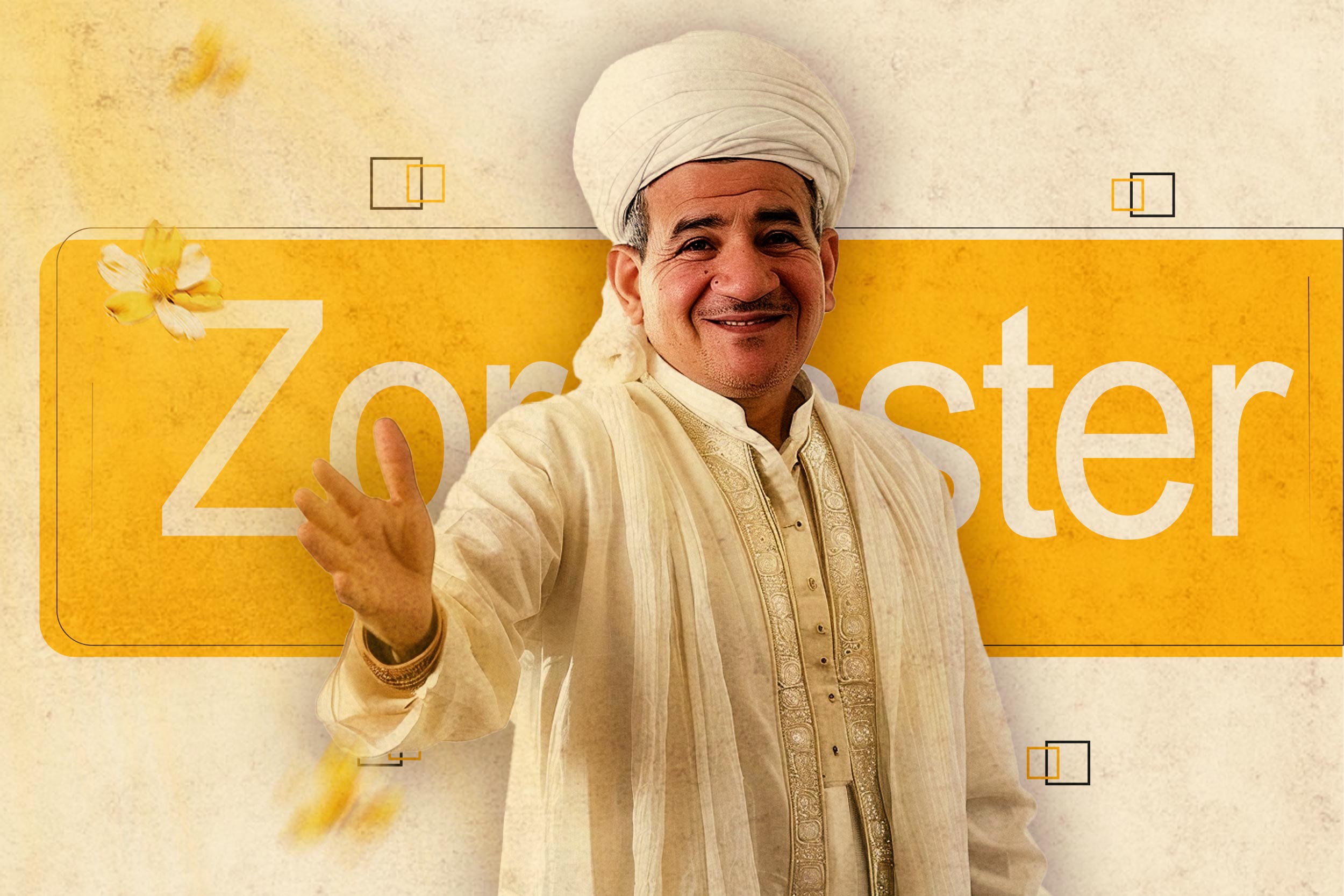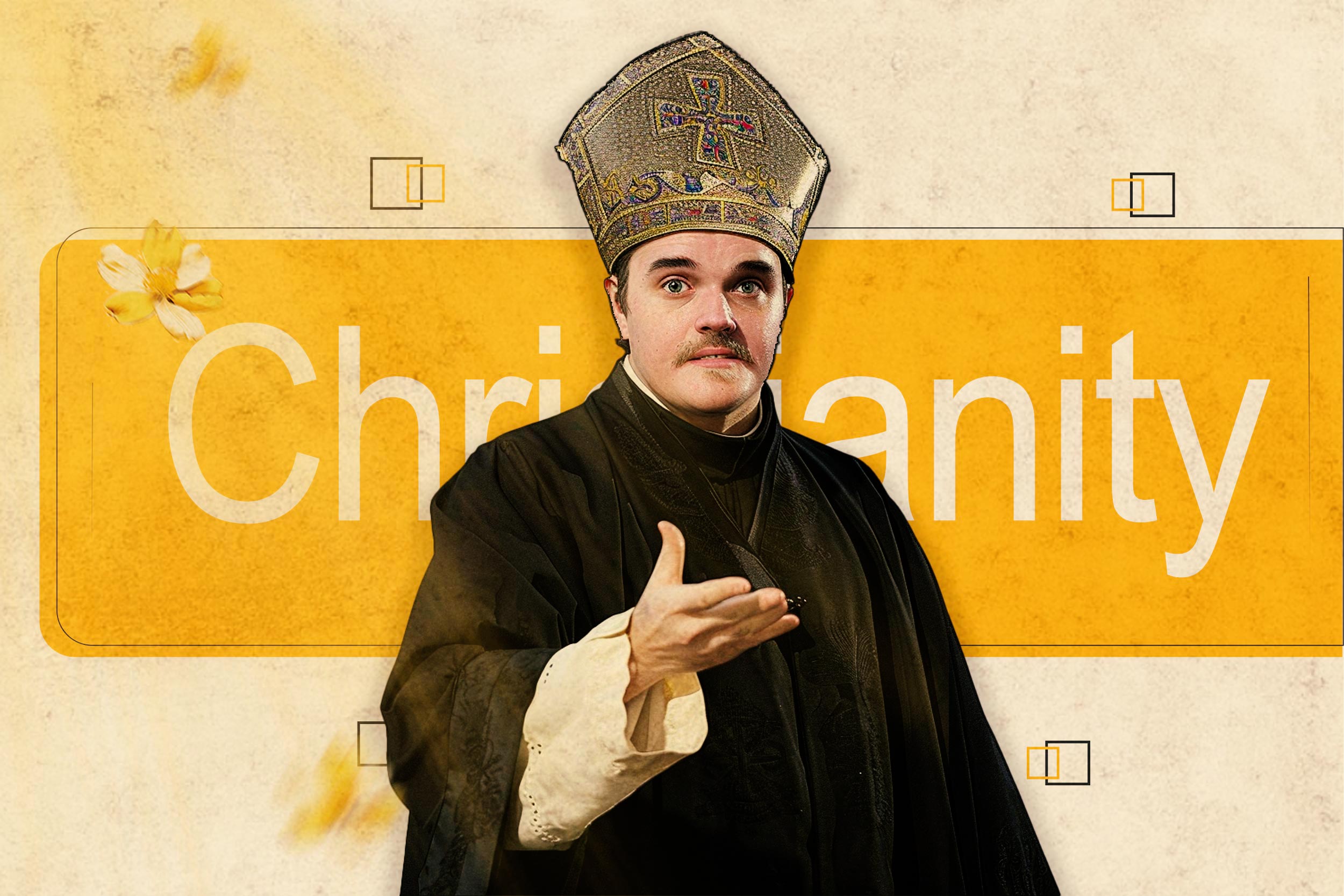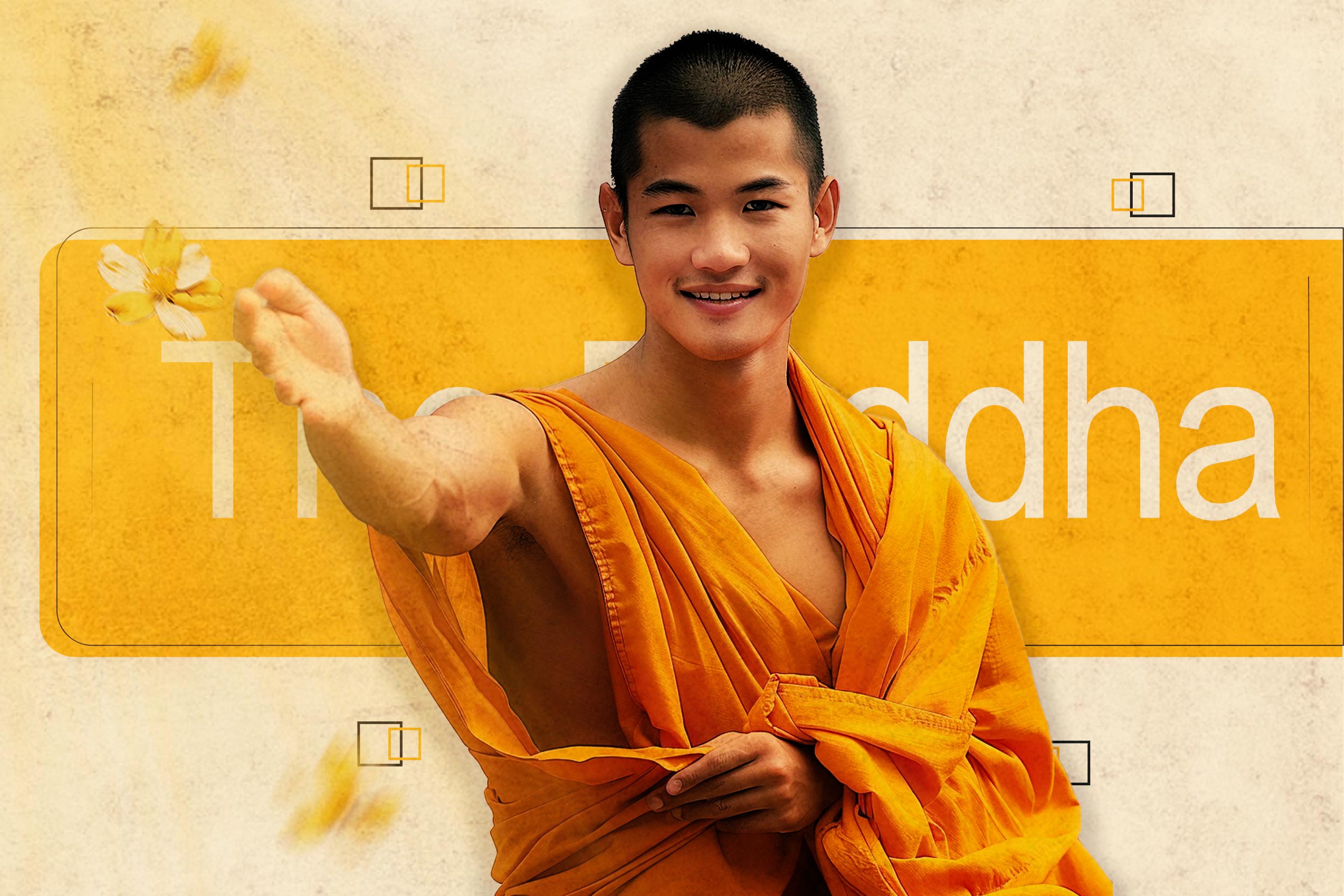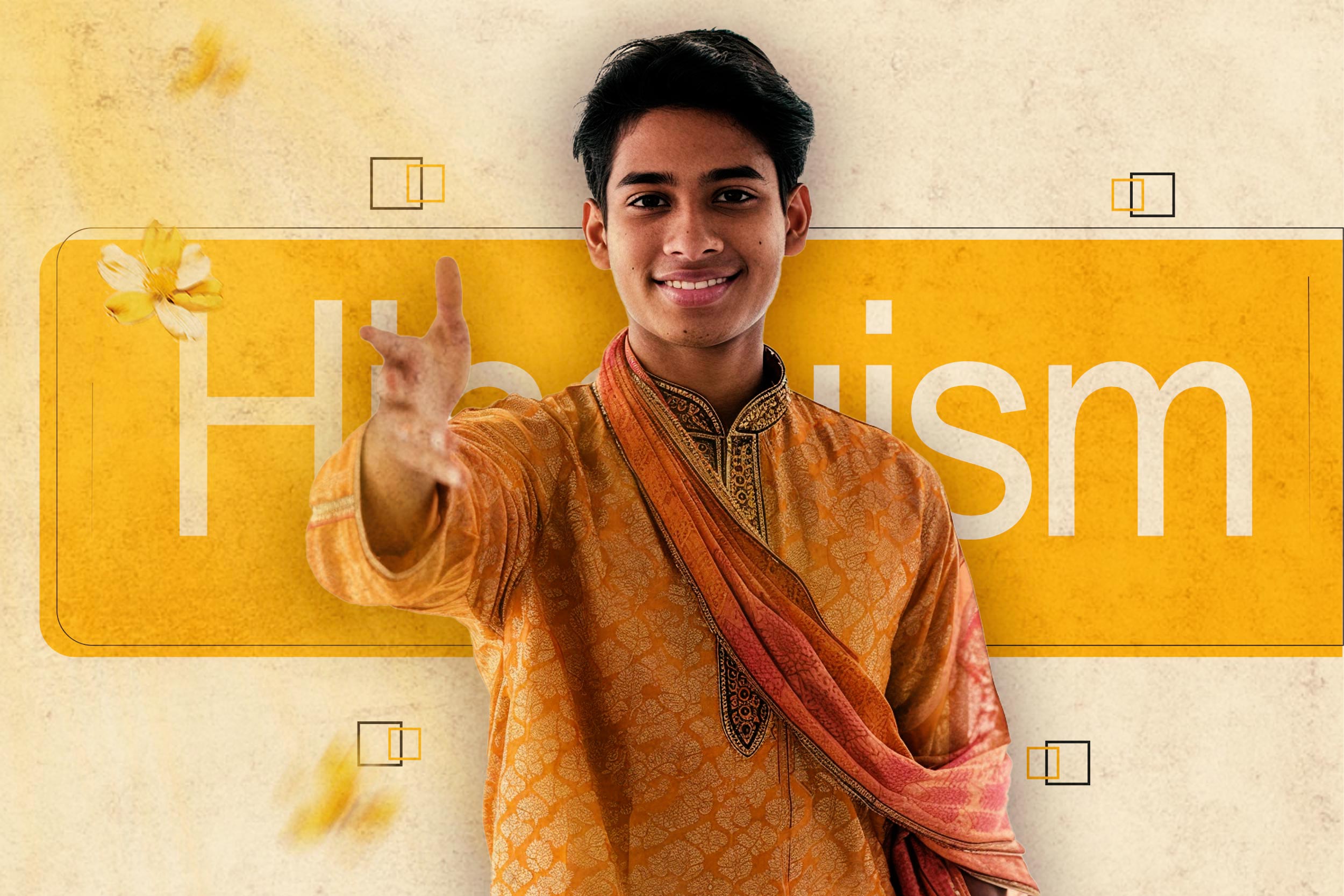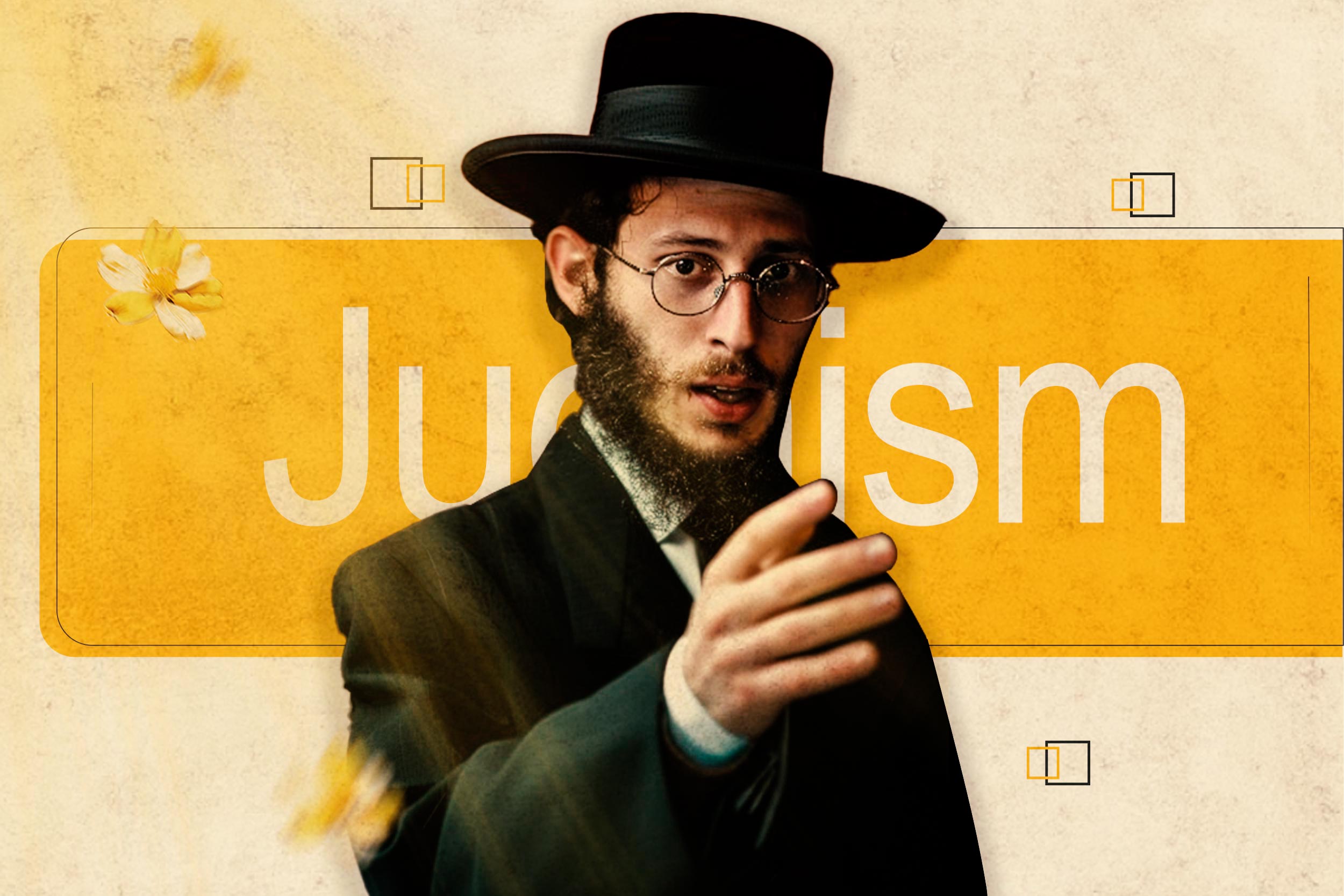A Look at the Zoroastrian Concept of the Savior and Getting to Know the Savior of Zoroastrianism in the Avesta
Defining the word “religion” leads us to concepts such worldview, and the beginning and the end of human life in this world and the other world. All religions have presented a clear definition of the concepts of “worldview” and “the beginning and the end of life.” Although, there are differences among most religions in defining these concepts, most religions share many commonalities regarding “the end of the world.” In most religions, this issue is interwoven with the concept of the savior. The savior is someone who will come, liberate the world from oppression, and help human beings to walk the path of faith. When the savior comes, darkness will end, every impurity will be cleansed, and God’s Justice will reign on earth.
Zoroastrianism is no exception to this rule. This religion promises a bright future to its followers. But who will lay the groundwork for this bright future according to Zoroastrianism?
- Who is the savior of Zoroastrianism?
- What are the characteristics of the savior of Zoroastrianism?
- What will happen after his coming?
- Can we consider the savior of Zoroastrianism as the Promised Savior of other religions?
In this article, we intend to examine the Zoroastrian worldview, the way Zoroastrians see the future, and introduce the savior of Zoroastrianism.
An Overview of the Zoroastrian Worldview
According to Zoroastrian cosmology, the world goes through a 12,000-year cycle. During the first 3,000 years, Ahura Mazda, the supreme deity in Zoroastrianism, is the sole ruler of the world. In the next 3,000 years, Ahura Mazda creates the physical world and all living beings. The following 3,000 years is the period of constant struggle between the forces of good (Ahura Mazda) and the forces of evil (Ahriman or Angra Mainyu). And the final 3000 years will be the era of the coming of the savior of Zoroastrianism (Saoshyant).
According to Zoroastrian worldview, the world is always a battleground between good and evil, or Spenta Mainyu and Angra Mainyu, and the human being is free to choose between one of these two forces.
“O wise ones! Listen with your ears to the best words, see with the Vohuman! And every one of you, be a man or woman, should choose one of the two paths, before the great event will end in our favor! And convey this message to others!”[1]
If a human being wants to enter the eternal heaven, he should rise up and fight against Angra Mainyu in the light of the three teachings of Zoroaster and fulfil his duty and make self-effort. Only then he can be a companion of Zoroaster and Ahura Mazda and will be among those who lay the groundwork for the establishment of the noble government of the Promised Savior.
“Therefore, those who feel hostile towards Daeve and his followers, walk a different path from those who despise Ahura Mazda and consider Him ugly.”[2]
“Everyone who fights against evil in his mind, and by his words and hands, or guides his followers to the right path, he fulfills God’s desire with happiness.”[3]
“This is a clear saying to someone who is wise and understands it with Vohuman. He is the one who guards Ahura by the power of Spenta Mainyu and with his words and actions, O Mazda Ahura! He is counted among your most diligent assistants.”[4]
“Until when at the end of the world, as Ahura Mazda has ordained, the army of Asha (truth) will be victorious over the army of falsehood.”[5]
And “Life will have a good ending.”[6]
According to Zoroastrian beliefs, the world will end when a comet named Gochihr hits the Earth. The comet’s fire will melt everything and burn the whole world. A huge river of hot metal will then flow over the Earth. Both good and bad people will have to go through this river. Bad people will be cleaned of their sins, but good people will feel like they are walking through warm milk.[7] Ultimately, everyone will live an eternal life in heaven, and Saoshyant[8] will make people immortal by performing the Yasna ceremony, the most important ritual in Zoroastrianism.[9]
“In truth, the one will attain good that shows us the path to truth and happiness in the material world and saves us in the spiritual world; the path leads to the truth and the court of Ahura Mazda. O Mazda! Lovers of truth and those who love Thee, shall ultimately reach Thee in the light of wisdom and holiness.”[10] But who is Saoshyant, and what is his role in Zoroastrian beliefs?
Examining the Concept of the Savior and Terms Related to It in Zoroastrianism
Unlike other religions that await the coming of the Promised Savior, Zoroastrians do not have one savior, rather, they await the coming of three saviors who are chosen from Zoroaster’s descendants. The birth of the savior of Zoroastrianism is shrouded in mystery. According to Zoroastrian beliefs, a zygote belonged to the Zoroaster has been preserved by Anahita, the goddess of water. In the final 3000 years of the world, in the beginning of every millennium, a boy will be born from this zygote. These three boys are named:
- Ōshētar, that means the nurturer of the holy law
- Ōshētarmāh, that means the nurturer of prayer and praise
- Astvat-ereta or Saoshyant, that means the embodiment of the holy law and liberator or the one who brings great benefit.[11]
In fact, Saoshyant can be considered as the Savior of Zoroastrianism, and the coming of Ōshētar and Ōshētarmāh can be considered as the signs and individuals who lay the groundwork for the coming of the final savior. Saoshyant will arrive at the end of our world to make everything new again. When he comes, the sun will stop moving for thirty days and nights.[12]
One of the important terms used in examining the concepts of the coming of the savior of Zoroastrianism is the term “Frashokereti,”[13] which means final renovation of the universe, and it applies to a time when, after the destruction of Ahriman, the universe will be as perfect as when it was first created.[14]
“(The Kavyan Glory) which will (have) come over/to Saoshyant Verethrajan (the Victorious Savior) and (his) other companions/when he will make existence brilliant,/not aging, imperishable,/not rotting, not putrefying,/enjoying eternal life, enjoying eternal benefit.”[15]
Saoshyant will gather an army and fight against evil demons and bad people. He will not just win by being physically strong, but by doing special ceremonies. God (Ahura Mazda) and his helpers (Amesha Spentas) will join the battle and fight against their evil counterparts. For example, Good Mind (Vohu Mana) will defeat Evil Mind (Aka Mana). The main evil spirit (Ahriman) will be locked away in darkness forever, unable to cause any more trouble in the perfect new world.[16]
All evil and wickedness will be vanished from the earth, and goodness (asha) and eternal life will last forever.[17] When the world is made new (Frashokereti), mountains will become low and valleys will be lifted up. Everyone will live in peace and safety in a perfect world ruled by God (Ahura Mazda) and good spirits. There will be no sickness, death, or suffering. Adults will always look like they are forty years old, and children will always look like they are fifteen.[18] Before people get their bodies back, they will be in heaven or hell without a physical body. Heaven is good, but not perfect, because it is not physical.[19] True happiness and perfection come when the soul and body are together again.
Considering the geography of ancient Iran, Saoshyant will be the ruler of the center part of the earth, and six of his companions will rule over six other countries.
“We worship Bahram, the Ahura-made, the victorious blow; and we worship the Saoshyant, who smites with victory.”[20]
“The Saoshyants and Saviors of the world are indeed wise and follow duty’s call guided by Vohuman. There deeds are inspired by Asha and on in tune with Thy teachings, O Mazda. They are, in truth, vanquishers of hate and anger and producers of love and peace.”[21]
The ideal society that Zoroastrians envision, with its emphasis on righteousness and justice, shares striking similarities with the Islamic concept of the “Noble Rule of the Righteous.” Both religions hold a vision of a world ruled by moral principles, where peace and prosperity prevail.
Zoroaster and the Savior of Zoroastrianism According to the Quran and Hadiths
Islam recognizes Zoroastrianism as a religion that has a scripture. Zoroastrians have been referred to in the Quran as Majus.[22] However, according to the Quran, the scripture of Zoroastrians has been distorted. Some scholars believe that Jamasp is the true prophet of Zoroastrianism. They also recognize the Jamasp Nameh as the scripture of Zoroastrians. Prophet Muhammad (Peace be upon him and his pure family), also acknowledged Zoroastrians as People of the Book, saying, “They had a prophet whom they killed and a book which they burned.”[23]
Anyway, whether we consider Zoroaster as the prophet of Zoroastrianism or acknowledge Jamasp as their prophet, according to the Quran and hadiths of prophet Muhammad, Imam Ali and Imam Sajjad (PBUT),[24] there is no doubt that Zoroastrianism is a divine religion.
Historians who believe that Jamasp was the prophet of Zoroastrians claim that his book, the Jamasp Nameh, was burned at the time of Alexander and rewritten during the Sassanid era; it was distorted and some of its parts were omitted. In a comparative analysis of the Zoroastrian worldview and the Islamic worldview, we find a lot of commonalities between Zoroastrianism and Islam, such as, the belief in the immortality of the soul, the hereafter, the realm of Barzakh, Sirat, Mizan, heaven, and hell. The main difference between Muslim and Zoroastrian beliefs about hell stems from Zoroastrians’ deep respect for fire as a symbol of purity. This leads them to envision hell as a cold and dirty place.
When we look at Zoroastrian religious texts, we find passages that suggest a different view about their own savior. These passages actually seem to align with the characteristics of the Muslim savior. For instance, in the Jamasp Nameh, after mentioning the prophethood of Prophet Muhammad (peace be upon him and his pure family), it is stated:
“From the children of the daughter of that prophet, who is called the Sun of the World and the King of women, someone will become king in the world, according to the commandment of Yazata, who will be the last successor to the Prophet, in the middle of the world that is Mecca… many of the blessed and prophets will become alive.”[25]
And it has been quoted from Zoroaster:
“A man will rise from the land of Arabs…. A man with a great head, great body and great legs and following the religion of his forefathers and with a great army, moves forward in Iran and constructs the lands and fills the earth with justice.”[26]
These verses in the Jamasp Nameh have led some scholars to question whether Zoroastrianism is a truly divine religion. They challenge the idea that Jamasp was a prophet for the Iranians and deny that Zoroaster was a true prophet, who was simply preaching the religion of Jamasp, trying to correct any deviations from this religion. This is because, according to the Islamic worldview, one of the most important reasons for the existence of commonalities among different religions is that all religions originate from God’s revelation. And this issue contradicts the humanistic views prevailing in religious studies.
According to what we have stated so far, the savior of Zoroastrianism, whatever his name is, fully corresponds to the Muslims Savior in terms of mission. The savior of Zoroastrianism will come to spread justice in the world and cleanse all impurities. Furthermore, after his coming, the world will be transformed into a place whose characteristics does not differ that much from those of heaven.
The conflicting information found in different Zoroastrian texts makes it difficult to study the concept of the savior of Zoroastrianism in detail. It is clear that Zoroastrians believe in a divine being who has given them a comprehensive worldview. Their guiding principle is “good thoughts, good words, and good deeds,” which inspires them to strive for a bright future. It is a religion where only through its teachings can a Zoroastrian achieve the highest status, which is assisting Saoshyant, their savior.
[1] . Avesta 2:30
[2]. Avesta 11:45
[3] . Avesta 2:33
[4]. Avesta 22:33
[5]. Avesta 16:44
[6]. Avesta 2:48
[7]. Bundahishn, chapter XXX
[8] . And ten years before Saoshyant will come, they will remain without food, and not die, and then Saoshyant will raise the dead. (Greater Budahishn, chapter XXXIV)
[9]. G. Messina, in Libro apocalittico persiano Ayātkār i Žāmāspīk, Rome, 1939, chapter 17, verses 9-16.
[10] . Avesta: Yasna 43:3
[11] . Avesta, Farwardin Yasht, verse 129
[12] . Philip G. Kreyenbroek, “Millennialism and Eschatology.” p. 39.
[13]. Yasna 30:9
[14]. T. Anklesaria. Zand i Vohuman Yasn. Mumbai: 1957.
[15] . Avesta, Zamyad Yasht (Yasht 19), Karde XIV
[16] . Anders Hultgard, “Persian Apocalypticism.” pp. 54-55.
[17] . Bundahishn 30.1ff
[18] . Norman Cohn. Cosmos, Chaos, and the World to Come. Yale University Press, 2001, p. 98.
[19] . Mary Boyce. Zoroastrians: Their Religious Beliefs and practices. Routledge, 2001, p. 27.
[20]. Avesta: Yasna 59:28
[21] . Avesta: Yasna 48:12
[22]. Quran, 22:17
[23]. Shaykh al-Hurr al-Amili. Wasa’il al-Shia. vol. 11, part 49 (Kitab al-Jihad), p. 96.
[24] . Naser Makarem Shirazi. Tafsir Nemooneh. vol. 14, pp. 45-46.
[25] . Part of Gathas, pp. 8-9
[26] . Reza Rezaie Khanghah. “Who Is Imam Mahdi, Prophesied In Other Religions, And From Holy Fatima lineage?” Shahid Rajaee Teacher Training University, 2022, p. 9.

